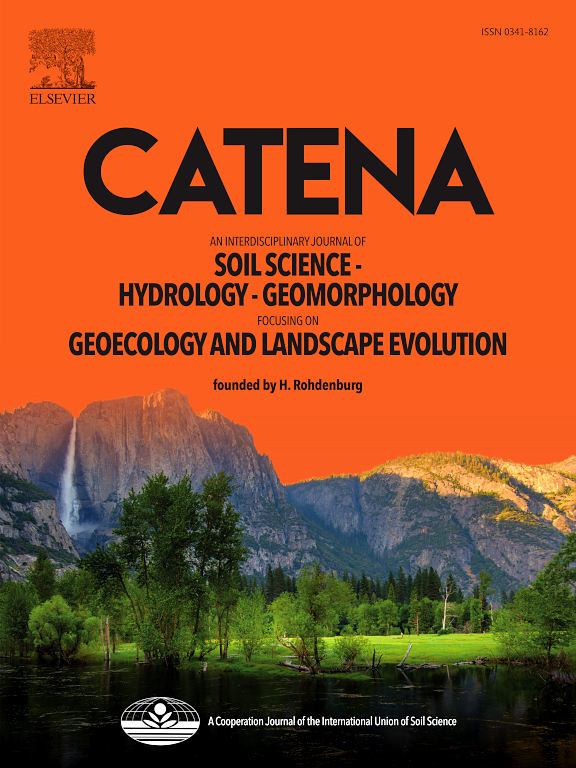Reseeding restoration significantly improves the physical and chemical properties of degraded grassland soil in China—a meta-analysis
IF 5.4
1区 农林科学
Q1 GEOSCIENCES, MULTIDISCIPLINARY
引用次数: 0
Abstract
Reseeding is widely used to restore degraded grasslands, given its efficiency in yielding a rapid restoration rate and high grassland output. Previous reseeding studies lacked integrated analysis to evaluate the restoration effect of reseeding on degraded grassland. We assessed the impact of reseeding on the restoration of degraded grassland and the influencing factors. Reseeding improved soil physical and chemical properties of degraded grassland, reducing soil bulk density (BD) (−2.18 %) and pH (−3.69 %), while increasing total nitrogen (TN) (11.74 %), total phosphorus (TP) (7.67 %), total potassium (TK) (2.40 %), and water content in soil (WC) (24.62 %). There was also an increase in soil organic carbon (SOC) content (17.94 %), promoting the conversion of degraded grasslands from carbon sources to carbon sinks. Reseeding had the highest and lowest restoration effects on typical grasslands and the Qinghai − Tibet Plateau (QTP). Reseeding significantly increased the WC (64.39 %), SOC (90.54 %), TN (42.50 %), and TP (11.43 %) content in typical grassland soil and reduced BD (−15.21 %). In contrast, reseeding only significantly increased the available potassium (AK) (19.85 %) content of QTP and reduced the soil pH (−2.94 %). Reseeding offered the most effective restoration for surface soil but did not considerably affect deep soil. The restorative impact of reseeding increased with the extent of grassland degradation. Medium- and long-term reseeding had the most significant restoration impact on WC (34.35 % and 65.15 %), TN (27.05 % and 20.47 %), and TP (12.76 % and 16.02 %). We provide new insights into restoring different grasslands with varying degrees of degradation and help with subsequent degraded grassland management.
求助全文
约1分钟内获得全文
求助全文
来源期刊

Catena
环境科学-地球科学综合
CiteScore
10.50
自引率
9.70%
发文量
816
审稿时长
54 days
期刊介绍:
Catena publishes papers describing original field and laboratory investigations and reviews on geoecology and landscape evolution with emphasis on interdisciplinary aspects of soil science, hydrology and geomorphology. It aims to disseminate new knowledge and foster better understanding of the physical environment, of evolutionary sequences that have resulted in past and current landscapes, and of the natural processes that are likely to determine the fate of our terrestrial environment.
Papers within any one of the above topics are welcome provided they are of sufficiently wide interest and relevance.
 求助内容:
求助内容: 应助结果提醒方式:
应助结果提醒方式:


